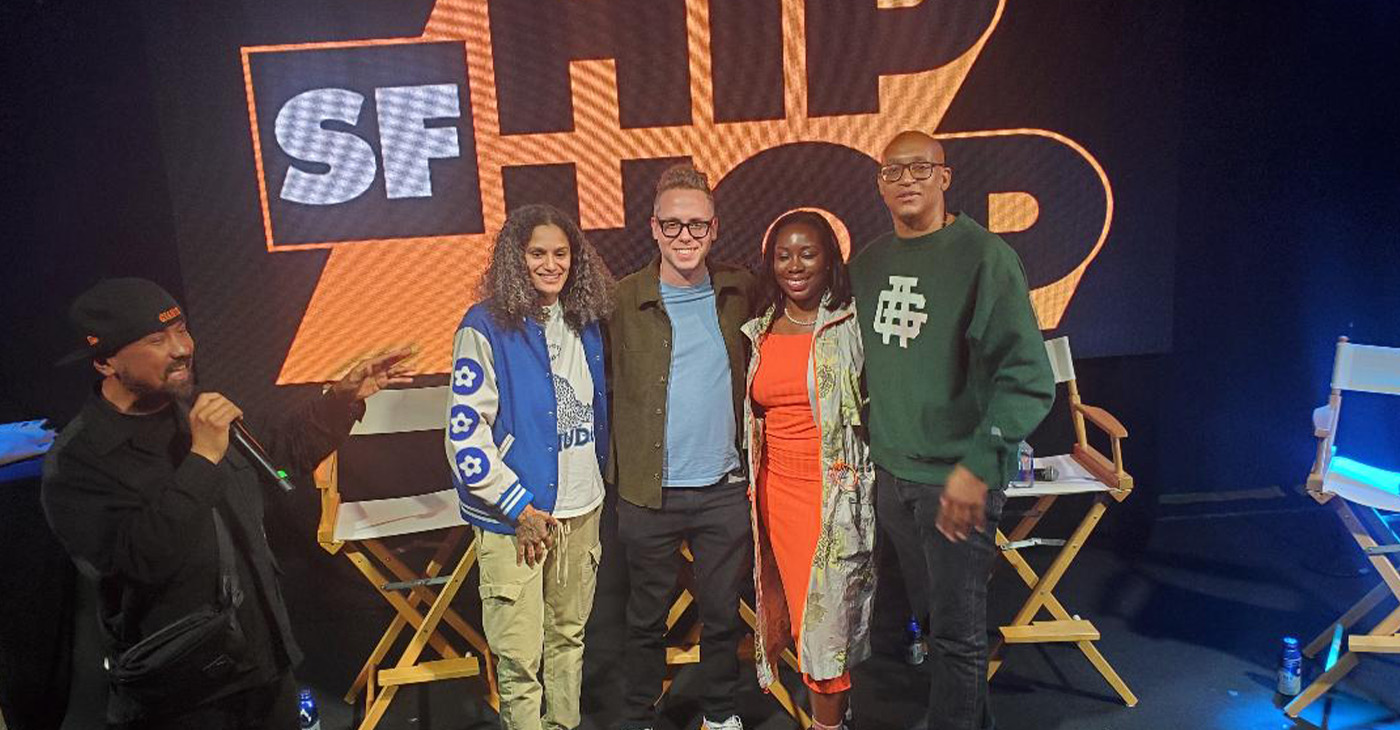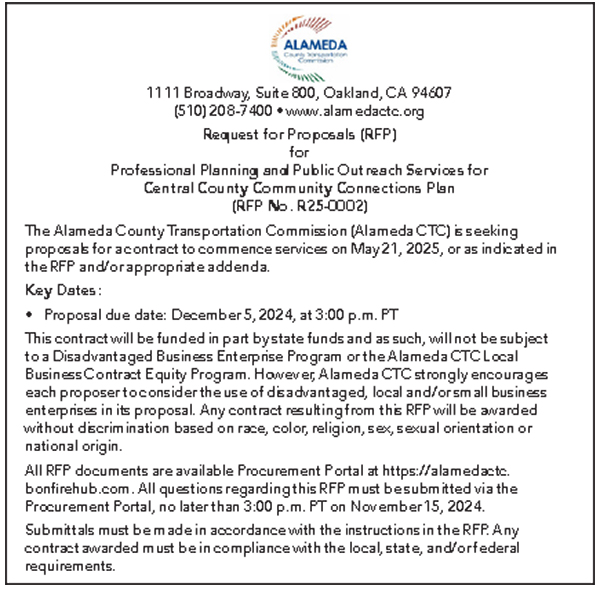Community
Climate-Induced Displacement is a Global Phenomenon, but Not Evenly Experienced
As world leaders presented their plans to combat rising global temperatures at the annual United Nations Climate Change Conference (COP 28) in Dubai from Nov. 30-Dec. 13, 2023, discussions are centered on how countries can cut greenhouse gas emissions and mitigate a dire environmental future. But a UC Berkeley researcher says that future is already here for millions of people displaced by the climate crisis. And those climate refugees are predominantly from formerly colonized countries that are not responsible, in large part, for the factors that exacerbate climate change.

UC Berkeley policy analyst from the Othering and Belonging Institute shares recommendations to protect people displaced from the climate crisis.
By Ivan Natividad
UC Berkeley News
As world leaders presented their plans to combat rising global temperatures at the annual United Nations Climate Change Conference (COP 28) in Dubai from Nov. 30-Dec. 13, 2023, discussions are centered on how countries can cut greenhouse gas emissions and mitigate a dire environmental future.
But a UC Berkeley researcher says that future is already here for millions of people displaced by the climate crisis. And those climate refugees are predominantly from formerly colonized countries that are not responsible, in large part, for the factors that exacerbate climate change.
Those nations — in the global south regions of Africa, Latin America, the Caribbean and much of Asia and Oceania — also lack the wealth and infrastructure to withstand intensifying natural disasters, rising sea levels and the collapse of industries dependent on stable climates, according to a recent Berkeley report.
“There are many examples of how global south countries face the brunt of a crisis they did not produce, due to the activities of countries and industries in the global north,” says report co-author Hossein Ayazi, a senior policy analyst at UC Berkeley’s Othering and Belonging Institute. “So, we want to help protect the most marginalized — climate-induced displaced persons — while targeting the sources of their marginalization.”
That is why the institute’s Global Justice Program recently launched an interactive database that helps both policymakers and impacted communities explore global data on climate-induced displacement. The report also offers strategies to ensure the protection of people displaced by the climate crisis, and climate resilience for them moving forward.
Ayazi said the research shows that sea levels are expected to rise drastically in the coming decades, which will impact nearly 40% of the world’s population that lives in coastal areas. And over 75% of all coastal populations — 90% of the world’s poor rural coastal areas — live in the global south.
Berkeley News spoke with Ayazi about what’s causing climate change displacement and what needs to happen to protect climate refugees and make their communities more resilient.
Berkeley News: Your research unpacks why people in the global south are more vulnerable to being displaced from the impacts of the climate crisis. What are some of the economic dimensions of this vulnerability?
Hossein Ayazi: Many countries in the global south have a relatively large percentage of their gross domestic product (GDP) derived from agriculture, forestry, and fishing — industries that are by nature more vulnerable to a changing climate.
In Ethiopia, for example, agriculture comprises almost 40% of its total GDP. That sector also employs over 80% of its population. So as these countries experience climate extremes — droughts, floods, increased temperatures and so on— their economies are impacted on a deep level.
A defining feature of countries in the global south is that their economies have been organized by, and to the benefit of, the global north — wealthier and powerful nations in North America and Europe. This means agricultural production that’s largely export-oriented, and not diversified, makes these countries especially inflexible and vulnerable to climate impacts.
Berkeley News: What other significant economic or financial factors cause or worsen climate-induced displacement?
Hossein Ayazi: Global south countries have a high external debt burden, with surcharges making things worse. In fact, global south debt payments in 2023 reached their highest level in 25 years.
This high debt burden means a poor sovereign credit rating, and a lack of fiscal space to invest in climate-resilient infrastructure and economies that can adequately respond to disasters. This is true at the individual and household level: When disaster strikes, it’s hard for people to manage when they are struggling financially.
Protecting climate refugees and affording people the right to stay in their communities means addressing such issues.
Berkeley News: While the focus of your data is on the global south, when you talk about climate displacement in this way it seems like it can happen anywhere — even in the United States.
Hossein Ayazi: It certainly can. Consider Hurricane Katrina in 2005. Residential segregation and decades of disinvestment in New Orleans’ levee infrastructure meant that when the storm hit, it would be the city’s poorer Black residents who would be displaced or lose their lives.
In the wildfires in Maui this year, we saw the inequalities in those communities exacerbated. Tourists had the means to reach safety and secure a place to stay, while many Native Hawaiians struggled to flee, save their homes, or recover afterward.
The climate crisis is a global phenomenon, but its impacts are not evenly experienced.
Berkeley News: Your research reveals that industries using extreme amounts of nonrenewable energy sources mostly come from wealthier countries in the global north. How do those industries affect the surrounding communities they inhabit?
Hossein Ayazi: Globally, we have come to be dependent on extractive, exploitative industries that might provide for some, but collectively harm us all, and certainly harm the people in closest proximity to them.
These industries are usually placed in marginalized communities in the global north — and in countries across the global south — and, rife with health and environmental impacts, they become mainstays of the broader economy.
Berkeley News: What is an example of this locally?
Hossein Ayazi: We can look to Richmond, California, and the Chevron oil refinery located there. Nearly 24% of the city’s general fund comes from the refinery, which also provides regional employment.
So, the question is: How do communities and countries become less dependent on these extractive industries that harm them, and us? How are these harms — past and present — addressed?
That’s the point of this work: Protecting peoples most harmed by the climate crisis, targeting the sources of the climate crisis, and building communities and economies that are just, sustainable and resilient against the climate crisis.
Berkeley News: What do world leaders need to do to make this vision a reality?
Hossein Ayazi: World leaders need to recognize the rights of people displaced by the climate crisis and across international borders. They also need to act upon demands for the transformational changes needed to materialize inclusive, just, and climate-resilient communities.
These demands entail ending the exploitation of land, resources and labor, and demilitarizing borders, among other key climate justice demands.
Berkeley News: What type of policy does your research recommend?
Hossein Ayazi: What we conceptualize as the “Right to Stay” is not only the right for climate-displaced people to safely resettle when their lives are uprooted. It is also the right to stay in place amidst the climate crisis, and against the extractive and exploitative structures that are forcing them to move.
To be able to aid the transition to climate-resilient societies and regenerative economies globally — while protecting the world’s most marginalized and exploited people and communities — a Right to Stay policy platform entails:
- Legal rights for all peoples displaced by the climate crisis, within and across national borders
- Climate reparations to countries in the global south, whose vulnerability to the climate crisis follows centuries of global north extractive and exploitative political and economic activity
- Just transitions that democratize, decentralize, and diversify economic activity and (re)distribute resources and power
Berkeley News: Why should the general public care about people displaced by climate change?
Hossein Ayazi: To address the condition of climate displacement is to come at the work of climate justice from multiple angles — from worker protections to migrant rights to prison abolition to reparations for the harms of colonialism and slavery to food sovereignty, and so on.
These struggles for justice and self-determination are all connected, especially under the climate crisis.
It’s that work that we’re trying to hold together through this database, and through the reports and recommendations that accompany it. Our work aims to map and strengthen this global constellation of efforts by helping the public and policymakers understand the structural nature of climate displacement.
Berkeley News: How do we build climate resilience in our own communities?
Hossein Ayazi: It begins with organizing ourselves as renters, as students, as workers, as debtors and so on. It’s about all the ways that we can collectively determine and respond to the sources of hardship in our life, in ways that are connected to these other issues.
And it must be through a hopeful message, a message that we’re going to co-create the future that we all deserve to live in.
Activism
‘I Was There Too’ Reveals the Hopes, Dangers of Growing Up in The Black Panther Party
On July 20, at the Oakland Museum of California’s Spotlight Sundays, Gabriel, the daughter of a Black Panther Party couple, Emory Douglas, minister of culture, and artist-educator, Gayle Asalu Dickson, gave a raw personal view of being raised in the middle of the Black Power Movement.

By Carla Thomas
Chronicles of the Black Panther Party are often shared from the perspectives of Huey Newton, Bobby Seale, Angela Davis, or Kathleen Cleaver. However, the view from a Panther’s child was unique on stage as Meres-Sia Gabriel performed, “I Was There Too.”
On July 20, at the Oakland Museum of California’s Spotlight Sundays, Gabriel, the daughter of a Black Panther Party couple, Emory Douglas, minister of culture, and artist-educator, Gayle Asalu Dickson, gave a raw personal view of being raised in the middle of the Black Power Movement.
Gabriel took the audience on her tumultuous journey of revolution as a child caught between her mother’s anger and her father’s silence as the Party and Movement were undermined by its enemies like the COINTELPRO and the CIA.
Gabriel remembers her mom receiving threats as the Party unraveled and the more lighthearted moments as a student at the Black Panther Party’s Community School.
The school was a sanctuary where she could see Black power and excellence in action.
It was there that she and other children were served at the complimentary breakfast program and had a front row seat to the organization’s social and racial justice mission, and self-determination, along with the 10-point platform where the party fought for equality and demanded its right to protect its community from police brutality.
On her journey of self-development, Gabriel recounted her college life adventures and transformation while immersed in French culture. While watching television in France, she discovered that her father had become a powerful post-revolution celebrity, sharing how high school and college-age youth led a movement that inspired the world.
Through family photographs, historical images projected on screen, personal narratives, and poetry, Gabriel presented accounts worth contemplating about the sacrifices made by Black Panther Party members. Her performance was backed by a jazz trio with musical director Dr. Yafeu Tyhimba on bass, Sam Gonzalez on drums, and pianist Sam Reid.

At the Oakland Museum of California, Amy Tharpe, Ayanna Reed, artist Meres-Sia Gabriel and Kenan Jones at the meet-and-greet after the “I Was There Too” multimedia production. Photo by Carla Thomas.
Gabriel’s poetry is featured in the “Black Power” installation at the Oakland Museum of California, and her father’s book, “Black Panther: The Revolutionary Art of Emory Douglas,” features her foreword. She accompanied her father on tour exhibiting his artwork from the Panther Party’s publication as Minister of Culture.
Gabriel considers her work as a writer and performer a pathway toward self-reflection and personal healing. While creating “I Was There Too,” she worked for a year with the production’s director, Ajuana Black.
“As director, I had the opportunity to witness, to create, to hold space with tenderness and trust,” said Black. “Her performance touched my soul in a way that left me breathless.”
With over two decades of musical theater experience, Black has starred in productions such as “Dreamgirls” as Lorrell and “Ain’t Misbehavin’s” Charlene. She also performs as the lead vocalist with top-tier cover bands in the Bay Area.
During the post-performance meet-and-greet in the (OMCA) Oakland Museum of California garden, Gabriel’s father posed for photos with family and friends.
“I am proud of her and her ability to share her truth,” he said. “She has a gift and she’s sharing it with the world.”
Shona Pratt, the daughter of the late BPP member Geronimo Pratt, also attended to support Gabriel. Pratt and Gabriel, known as Panther Cubs (children of the Black Panther Party), shared their experience on a panel in Richmond last year.
“Meres-Sia did a great job today,” said Pratt. “It was very powerful.”
Meres-Sia Gabriel was born and raised in Oakland, California. A graduate of Howard University in Washington, D.C., and Middlebury College School in France, Gabriel serves as a French instructor and writing coach.
Activism
The Past and Future of Hip Hop Blend in Festival at S.F.’s Midway
“The Music and AI: Ethics at the Crossroads” panel featured X.Eyee, CEO of Malo Santo and senior advisor for UC Berkeley’s AI Policy, Sean Kantrowitz, director of media and content @Will.I.A.’s FYI, Adisa Banjoko of 64 Blocks and Bishop Chronicles podcast, and Julie Wenah, chairwoman of the Digital Civil Rights Coalition.

By Carla Thomas
“Cultural Renaissance,” the first-ever SF Hip-Hop conference, occurred at The Midway at 900 Marin St. in San Francisco on July 18 and 19. Held across three stages, the event featured outdoor and indoor performance spaces, and a powerful lineup of hip-hop icons and rising artists.
Entertainment included Tha Dogg Pound, celebrating their 30th anniversary, Souls of Mischief, and Digable Planets. “Our organization was founded to preserve and celebrate the rich legacy of Hip-Hop culture while bringing the community together,” said SF Hip-Hop Founder Kamel Jacot-Bell.
“It’s important for us to bring together artists, innovators, and thought leaders to discuss how hip-hop culture can lead the next wave of technological and creative transformation,” said Good Trouble Ventures CEO Monica Pool-Knox with her co-founders, AJ Thomas and Kat Steinmetz.
From art activations to cultural conversations, the two-day event blended the intersections of AI and music. Panels included “Creative Alchemy – The Rise of the One-Day Record Label,” featuring producer OmMas Keith, composer-producer Rob Lewis, AI architect-comedian Willonious Hatcher, and moderator-event sponsor, AJ Thomas.
“The Legends of Hip-Hop and the New Tech Frontier” panel discussion featured hip-hop icon Rakim, radio personality Sway, chief revenue officer of @gamma, Reza Hariri, and music producer Divine. Rakim shared insights on culture, creativity, and his A.I. start-up NOTES.
“AI is only as good as the person using it,” said Rakim. “It cannot take the place of people.”
Rakim also shared how fellow artist Willonious helped him get comfortable with AI and its power. Rakim says he then shared his newfound tool of creativity with business partner Divine.
The panel, moderated by the Bay Area’s hip-hop expert Davey D, allowed Divine to speak about the music and the community built by hip-hop.
“Davey D mentored me at a time when I had no hope,” said Divine. “Without his support, I would not be here on a panel with Rakim and Willonious.”
Hatcher shared how his AI-produced BBL Drizzy video garnered millions of views and led to him becoming one of Time magazine’s 100 most influential AI creators.
“The Music and AI: Ethics at the Crossroads” panel featured X.Eyee, CEO of Malo Santo and senior advisor for UC Berkeley’s AI Policy, Sean Kantrowitz, director of media and content @Will.I.A.’s FYI, Adisa Banjoko of 64 Blocks and Bishop Chronicles podcast, and Julie Wenah, chairwoman of the Digital Civil Rights Coalition.
“Diverse teams solve important questions such as: ‘How do we make sure we bring diverse people to the table, with diverse backgrounds and diverse lived experiences, and work together to create a more culturally sound product,’” said Wenah.
Self-taught developer, X.Eyee said, “You have to learn the way you learn so you can teach yourself anything. Future jobs will not be one roadmap to one individual skill; you will be the orchestrator of teams comprised of real and synthetic humans to execute a task.”
Activist Jamal Ibn Mumia, the son of political prisoner Mumia Abu Jamal, greeted Black Panther Party illustrator Emory Douglas, who was honored for his participation in the Black Power Movement. Douglas was presented with a statue of a black fist symbolizing the era.
“It’s an honor to be here and accept this high honor on behalf of the Black Panther Party,” said Douglas, holding the Black Power sculpture. “It’s an art (my illustrations) that’s been talked about. It’s not a ‘me’ art, but a ‘we’ art. It’s a reflection of the context of what was taking place at the time that inspired people.
“To be inspired by is to be in spirit with, to be in spirit with is to be inspired by, and to see young people continue on in the spirit of being inspired by is a very constructive and powerful statement in the way they communicate,” Douglas said.
His work embodied the soul of the Black Panther Party, and as its minister of culture and revolutionary artist, he definitely keeps the Panther Party soul alive, and his work is everywhere.
“Brother Emory Douglas is an icon in the community,” said JR Valrey of the Block Report.
“Fifty years later, he’s still standing,” said Ibn Mumia, raising his fist in the traditional Black Power salute.
“Emory is a living legend and so deserving of this award,” Valrey said. “We have to honor our elders.”
#NNPA BlackPress
What Trump’s Control of D.C. Police Means for the City, Its Mayor, and Black Residents
BLACKPRESSUSA NEWSWIRE — Donald Trump today seized direct control of Washington, D.C.’s Metropolitan Police Department, removing authority from Mayor Muriel Bowser and placing the force under the command of Attorney General Tom Cotton. The move comes under a “crime emergency” declaration that allows the president to invoke Section 740 of the D.C. Home Rule Act — a rarely used law that exists only because the District lacks full statehood.

By Stacy M. Brown
Black Press USA Senior National Correspondent
Donald Trump today seized direct control of Washington, D.C.’s Metropolitan Police Department, removing authority from Mayor Muriel Bowser and placing the force under the command of Attorney General Tom Cotton. The move comes under a “crime emergency” declaration that allows the president to invoke Section 740 of the D.C. Home Rule Act — a rarely used law that exists only because the District lacks full statehood.
For Mayor Bowser, this means she no longer has operational control of her own police department. All decisions on how and where officers are deployed now run through the Justice Department. That includes the ability to redirect D.C. police from neighborhood patrols to guard federal buildings, secure national monuments, and police protests — even if it leaves fewer officers in local communities. For African Americans in the District — who make up nearly half the city’s population — the change places local policing under the direct control of a president who has repeatedly called for racial profiling, attacked other predominately Black-led cities such as Baltimore and Chicago, and used “law and order” policies that disproportionately target Black communities. Residents could see federal priorities override local crime prevention strategies, with increased policing around demonstrations and broader latitude for aggressive enforcement tactics. Trump justified the takeover by citing D.C.’s 2024 homicide and vehicle theft rates, even though other cities he has singled out — all with large Black populations and Black leadership — have seen major crime reductions this year. The order has no end date, meaning the District’s police could remain under federal command indefinitely. This is only possible because D.C. is not a state — a political reality that leaves its leadership vulnerable to federal override and its residents without full control over their own local government.
-

 Activism3 weeks ago
Activism3 weeks agoOakland Post: Week of July 16 – 22, 2025
-

 #NNPA BlackPress3 weeks ago
#NNPA BlackPress3 weeks agoGraves Near Youth Prison Spotlight Maryland’s Legacy of Injustice
-

 #NNPA BlackPress3 weeks ago
#NNPA BlackPress3 weeks agoIN MEMORIAM: Malcolm-Jamal Warner, Beloved Star of “The Cosby Show,” Dies at 54
-

 #NNPA BlackPress3 weeks ago
#NNPA BlackPress3 weeks agoAI Isn’t Killing Jobs—Yet. But Entry-Level Workers and Middle Managers Should Be Watching Closely
-

 #NNPA BlackPress3 weeks ago
#NNPA BlackPress3 weeks agoHARLEM WEEK 2025: A Celebration of Culture, Legacy, and Community
-

 #NNPA BlackPress3 weeks ago
#NNPA BlackPress3 weeks agoBeyoncé’s Tour Spurs Black Western Fashion Revival
-

 #NNPA BlackPress3 weeks ago
#NNPA BlackPress3 weeks agoFBI’s Release of King Assassination Files Is an Invasion of Privacy, Say King’s Children
-

 #NNPA BlackPress4 weeks ago
#NNPA BlackPress4 weeks agoFrom Eggs to Hotels, Prices Soar as Inflation Redefines Daily Life























































